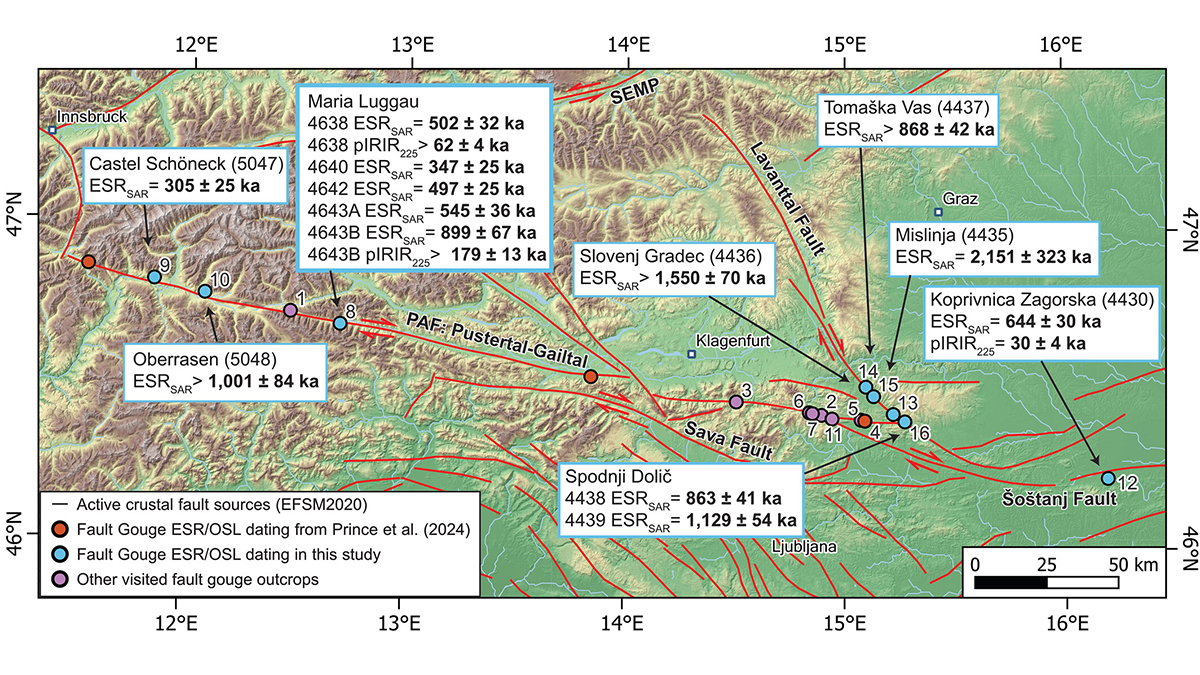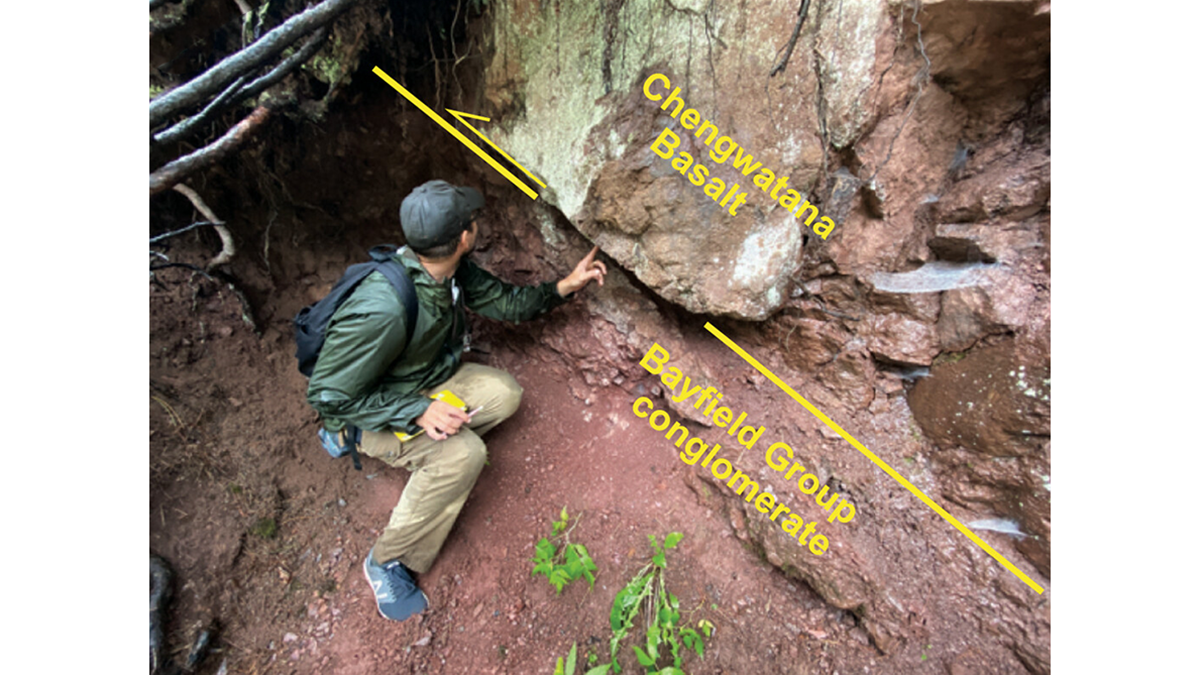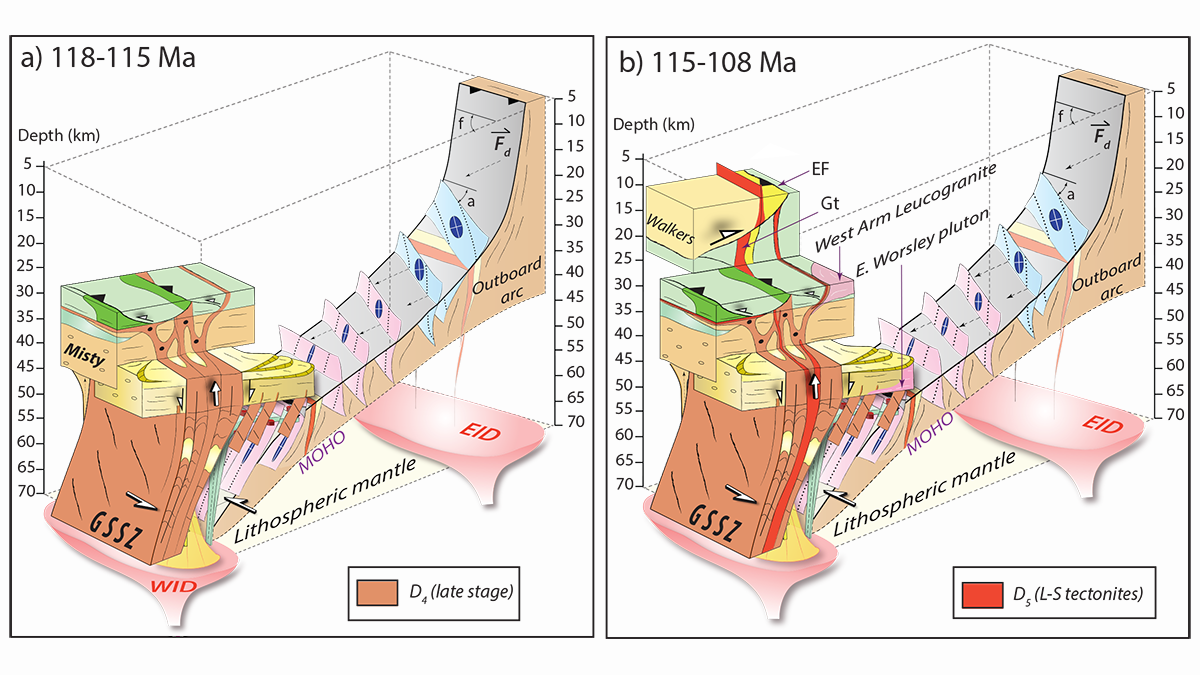Scientists combine two novel dating techniques on fault gouge to better pinpoint the timing and nature of past fault activity in the Eastern Alps.
Alexis Ault
Associate Editor, Tectonics
Posted inEditors' Highlights
Structural Inversion of an Intracratonic Rift System in Deep Time
A new study reconstructs how an ancient North American rift system was uplifted in space and time due to subsequent continent-continent collision.
Posted inEditors' Highlights
Feedbacks Between Deformation and Magmatism as Shear Zones Grow
New research reveals how the presence and absence of magmatism governs how shear zones initiate, grow, and reactivate to connect lower and upper crustal deformation.



